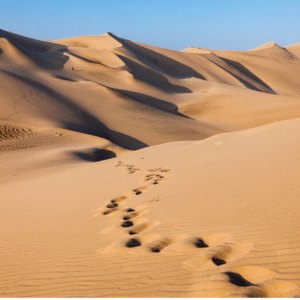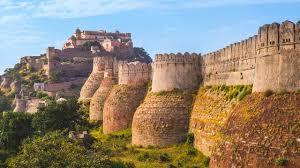There’s something undeniably raw and soul-stirring about the Tapovan Gaumukh Trek. I’ll be honest—when I first heard about it, my instincts screamed, “You can do this solo!” How difficult might a trip be, after all? So you put on your boots, gather your supplies, and head out onto the trail?f
Wrong.
If you’re anything like me—adventurous but not reckless—you’re probably weighing the same question: Do I really need a guide for this trek? Well, after doing it myself and talking to others who’ve braved it both ways, I’ve got a straightforward answer: Yes, you do. And not because you’re incapable. But because Tapovan isn’t your regular weekend hike. This trail plays a different game—one of altitude, remoteness, and unpredictable moods of the Himalayas.
So, let me break it down from my personal experience. No fluff, no generic tips. Just the unvarnished truth you require before choosing a course of action.
Table of Contents
ToggleUnderstanding the Tapovan Gaumukh Trek
Where Is Tapovan and Gaumukh?
Let’s get our bearings first. The Tapovan Gaumukh Trek begins in Uttarakhand, India, at Gangotri. It’s set deep in the Garhwal Himalayas and stretches out to the very snout of the Gangotri Glacier—famously known as Gaumukh, or “cow’s mouth,” where the sacred Ganges begins its epic journey.
From Gaumukh, the trail climbs sharply to Tapovan, a serene alpine meadow tucked away in Mount’s shadow.Shivling, one of the most dramatic peaks you’ll ever lay eyes on. You’re not just walking here; you’re ascending to around 14,600 feet, which is no joke.
What’s fascinating is that this trek blends spirituality with raw wilderness. Pilgrims and mountaineers walk the same route. Sadhus meditate in caves. Glacial rivers thunder beside you. And everywhere you look, mountains stand like ancient sentries.
But here’s the twist—this beauty hides some serious challenges. It’s more important to endure the journey and fully experience it than it is to simply arrive at your destination. And that’s where things get interesting.
What Makes This Trek So Special?
It’s hard to put into words what this trek does to you. One moment you’re catching your breath after a steep climb, the next you’re standing at the base of a glacier that literally gives birth to a river worshipped by millions. That contrast? It stays with you.
You pass through Bhojwasa, a surreal campsite nestled beside the Bhagirathi River. You push past Chirbasa, surrounded by blue pine forests. Then you face the Gaumukh Glacier, a cracked, thunderous beast of ice. And Tapovan? It’s like stepping onto another planet—a patch of golden grassland sitting silently beneath snow peaks like Mt. Shivling, Bhagirathi I, II, and III.
But all that grandeur comes at a cost. You’re walking in a zone prone to landslides, icefalls, and even bear encounters. The air gets thinner, your body aches in places you didn’t know existed, and the cold? It bites.
So yeah, Tapovan isn’t just a trek. It’s a personal test of patience, strength, and your relationship with nature. And to be honest, trying to conquer that solo, without proper local knowledge, is a gamble you don’t want to take.
Trekking Challenges – Why This Isn’t Your Average Hike
Unpredictable Weather and Terrain
Here’s something I didn’t fully grasp until I was in it—the weather on this trek has a personality disorder. One moment it’s all sunshine and birdsong, and the next you’re battling hail, snow, or a freezing downpour. The trail is a mix of scree, loose rocks, glacial moraine, and ice. It shifts without warning.
During my ascent to Tapovan, clouds rolled in from nowhere. Visibility dropped to zero. Without our guide, we would’ve missed the trail forks and probably wandered into some crevasse zone. Not a fun thought.
That kind of unpredictability is what makes this trek tricky. Even seasoned trekkers I met on the way admitted they wouldn’t do it unguided again. The terrain changes fast and brutally. One slip on a frozen boulder, and you’re done.
High Altitude and Acclimatization Risks
Here’s another thing: altitude is the silent killer here. You’re climbing above 14,000 feet, which means your body is gasping for oxygen, whether you realize it or not. I thought I was fit—I run 10Ks and hike regularly—but even I started feeling dizzy by the time we neared Gaumukh.
Acclimatization isn’t optional here. You need slow ascents, proper hydration, and someone watching for signs of AMS (Acute Mountain Sickness). That “someone” is often your guide. Our group had a guy who ignored the symptoms—and had to be stretchered back.
So no, this isn’t the place to test your high-altitude limits solo. Having a guide who understands acclimatization protocols can literally save your life.
Do You Legally Need a Guide for This Trek?
Forest Permits and Entry Rules
Let’s talk red tape. If you’re planning to trek to Tapovan and Gaumukh, you can’t just show up and start walking. You legally need permits from the forest department, and these are issued with limitations. Gangotri National Park only permits a certain amount of visitors each day. This isn’t just crowd control—it’s environmental preservation.
Now, here’s the tricky part: you can apply for the permits yourself, but it’s not as simple as clicking a few buttons online. The process requires details about your route, return dates, group size, and emergency contacts. And if you mess up one form or miss a signature, you’re stuck at the check post while your trek window closes.
When I booked through a guide, all of this was handled for me. They had our names pre-registered, permits ready at Gangotri, and even managed the National Park entry briefing. No lines, no hassle.
If you go solo, prepare for some bureaucratic back-and-forth. Also, in some cases, especially for foreign nationals, local authorities might insist on a registered guide due to safety and documentation reasons.
Restricted Zones and BSF Checkpoints
Here’s something most first-timers don’t know until they hit the trail—there are BSF (Border Security Force) and ITBP (Indo-Tibetan Border Police) checkpoints on this route. Tapovan lies close to sensitive border areas, and the region’s proximity to Tibet means tighter controls.
At some checkpoints, solo trekkers without a guide may face extra scrutiny or even be denied access if their documentation doesn’t seem complete or if their itinerary looks too vague. This happened to a couple of guys in the group ahead of us. They were sent back from Gaumukh because they didn’t have verified IDs or a properly filled-out route map.
With a local guide, these things are usually smoothed out ahead of time. They know where the checkpoints are, what paperwork is needed, and how to communicate effectively with the authorities. You may not need a guide legally in all situations, but in practice, not having one could mean you never make it to Tapovan at all.
Why a Guide Makes a Big Difference
Navigation and Trail-Finding Skills
Have you ever walked across a glacial moraine without signs, trails, or GPS signal? Solving a jigsaw puzzle while wearing a blindfold is analogous to this. That’s what parts of the Tapovan trek feel like. Beyond Gaumukh, it’s a jagged jumble of ice, rocks, and high cliffs with no obvious trail signs.
During my trek, there was a point where the trail was completely wiped out by a minor landslide. The original path’s location is unknown. Our guide took a detour, testing rocks with his stick, checking wind direction, and reading the terrain like he’d grown up there (which he had, actually).
That moment convinced me. You can be a pro with maps and still get lost here. Guides don’t just find the trail—they know it, with all its seasonal changes and current conditions.
Emergency Handling in Remote Conditions
It’s easy to romanticize the idea of solo trekking—until you twist an ankle, develop altitude sickness, or lose your way 12 kilometers from the nearest village. Up here, there’s no quick help, no mobile signal, and no ambulance on standby.
Our guide carried an oximeter, satellite phone, first-aid kit, and emergency contacts in Gangotri. He checked each of us daily for signs of AMS. One night, a fellow trekker had severe nausea and breathlessness—early symptoms of HAPE (High Altitude Pulmonary Edema). The guide immediately arranged for descent, a mule, and medical attention.
Without him, things could’ve gone south—fast.
That’s the thing about Tapovan: when things go wrong, they go wrong in silence. A guide doesn’t just make your trek smoother—he might make sure you actually come back from it.
What If You’re an Experienced Trekker?
Self-Sufficiency vs. Smart Trekking
I’ve done my fair share of solo treks. So I get it—you don’t want to feel babied. You’ve got the gear, the fitness, the route mapped on your app. But here’s the difference between being self-sufficient and being reckless.
Tapovan demands both physical grit and high-altitude intelligence. knowing when to apply pressure and when to pause. Knowing how to read weather patterns, glacial cracks, or animal tracks. Yes, even being able to cook over a campfire in the event that your cooker breaks down.
A guide doesn’t take away your independence. If anything, it adds a safety net so you can push yourself without pushing too far. Most experienced trekkers I met out there weren’t proving anything—they were smart enough to delegate the stress and enjoy the climb.
Why Even Pros Choose to Go with a Guide
You know what surprised me? Some of the most hardcore mountaineers I met on the trail were walking alongside guides. Not because they didn’t know how to do it—but because they valued the support.
Guides know where the best water sources are. They set up tents in wind-safe zones. They manage mules, gear, and meals while you focus on the walk. And they know how to handle altitude better than any manual can teach.
You’re not weak if you use a guide. You’re just experienced enough to know that sometimes, being smart beats being solo.
Choosing the Right Trekking Guide or Agency
How to Identify a Trustworthy Trek Partner
Finding a guide for the Tapovan Gaumukh trek isn’t the hard part—finding a good one is. The trail has become more popular over the years, which means more agencies have popped up, promising the “best experience” for the “lowest price.” Sounds tempting, right? But believe me, you don’t want to take any shortcuts here.
When I started planning, I created a checklist. Here’s what I looked for:
-
Government registration – Are they approved by the Uttarakhand Tourism Department or GMVN?
-
Experienced local guides – Not just someone who’s done the trail once, but folks who’ve walked it season after season.
-
Inclusions – Are they providing permits, transport, porters, meals, and camping equipment?
-
Emergency preparedness – Do they carry oximeters, first-aid, satellite phones, and have contacts with local authorities?
You’ll also want to read real reviews—not just testimonials on their site. Look at Instagram, YouTube, and travel forums. If you notice the same name coming up again and again in positive conversations, that’s usually a sign they’re doing something right.
What Services Should Be Included in a Guided Trek?
When I finally booked my trek, I went with an experienced Uttarakhand-based agency that came recommended by multiple trekkers. They weren’t flashy, didn’t overpromise, but they were incredibly solid where it mattered.
Here’s what I got:
-
All permits and national park fees handled
-
A highly trained local guide + assistant
-
Mule support for heavy backpacks
-
High-altitude tents and sleeping bags
-
All meals from Gangotri to Tapovan and back
-
Emergency support plan (including a liaison in Gangotri)
What stood out was how seamless everything felt. I didn’t have to think about logistics once we started. And in a place where every ounce of energy matters, that was huge.
So when you’re picking an agency, don’t just compare prices. Compare peace of mind.
My Experience – Why I Chose to Go with a Guide
Real Moments When Having a Guide Helped
There were at least three points during the trek when I silently thanked the mountains for sending our guide.
-
The Moraine Confusion at Gaumukh – As I mentioned earlier, the trail basically vanishes as you cross the glacier area. Boulders everywhere, no path in sight. Our guide found a safe route in under 10 minutes. We’d have wandered for hours.
-
Altitude Sickness on Day 3 – One trekker started showing symptoms—headache, breathlessness, confusion. Our guide spotted it instantly, administered medication, and arranged for a slow descent the next morning. The rest of us continued, confident someone had our backs.
-
Nightfall Before Bhojwasa – It grew dark because we misjudged how long it would take to get to camp. The cold was brutal. Our guide had headlamps, extra layers, and warm tea ready when we finally reached. Without that, someone might’ve quit right there.
These weren’t major crises—but each moment reminded me that I wasn’t just hiking a scenic trail. I was walking through one of the harshest yet most magical terrains in the country, and having a guide made the magic possible without risking the nightmare.
Comparing My Trek with Others Who Went Solo
I met a solo trekker—let’s call him Raj—on the way down. Fit guy, experienced, full of energy. But he looked wiped. Turns out, he had:
-
Missed the ideal campsite at Tapovan by almost 2 km
-
Lost his water filter to a drop in the Bhagirathi River
-
Been stopped at a checkpoint for lack of proper route docs
He wasn’t in danger, but his experience? Let’s say it lacked peace. He admitted that while it felt cool to go solo, he wouldn’t do it again without backup.
Me? I had meals served hot, camp set up when I arrived, zero stress, and a head full of views—not worries. That’s what a guide buys you: headspace to enjoy the damn trek.
Hidden Perks of Trekking with a Guide
Local Stories, Culture, and Insights
One thing I didn’t expect—but absolutely cherished—was the depth of local knowledge our guide brought to the journey.
He didn’t just lead us from point A to B. He told us why the Bhagirathi peaks are considered divine, where sages were believed to meditate, and how the ecosystem is changing each season due to glacier retreat. We even learned how to spot bear tracks and identify native birds like the Himalayan monal.
That connection to the land—you don’t get that from Google Maps. It elevated the trail above a mere physical trek. It felt like walking through a living story.
Guides, especially local ones, are walking encyclopedias of folklore, ecology, and survival. Their stories made each step meaningful. You feel like you’re not just passing through, but actually participating in something timeless.
Better Food, Campsites, and Safety Nets
Let’s not pretend food doesn’t matter at 13,000 feet. It does. A lot.
With a guide and support crew, meals were warm, nourishing, and timed perfectly with our energy needs. From hot tea at Chirbasa to khichdi at Tapovan, it wasn’t luxury—but it was reliable. And when you’re burning thousands of calories daily, that’s gold.
Also, our campsites were strategically chosen—not just flat land, but shielded from wind, near water sources, and away from rockfall zones. One night, we camped in a slightly elevated area that caught the morning sun first, melting the frost faster than other spots.
These small things added up. Comfort isn’t just about coziness—it’s about staying physically and mentally strong for each next stretch of the trail.
The Cost Factor – Is It Worth It?
Breaking Down the Price of a Guided Trek
Let’s talk money—because it’s often the one thing holding people back from hiring a guide. I get it. Solo seems cheaper. But is it really?
Here’s what a guided trek to Tapovan Gaumukh generally includes:
-
Permits and park entry fees: ₹1,500–2,000
-
Transport (Dehradun to Gangotri and back): ₹3,000–4,000
-
Accommodation and meals: ₹5,000–6,000
-
Trek staff, guide, and mule support: ₹7,000–10,000
-
Tents, sleeping bags, kitchen setup: included
All in, you’re looking at ₹15,000–20,000 for a full 6–7 day package. Solo trekking may seem cheaper, but once you add up meals, gear rental, permits, and emergencies—you’re not saving much. And you’re adding a whole lot of stress.
What I paid felt reasonable, especially considering the logistics and safety included. In the Himalayas, the cheapest option is rarely the best. What you save on money, you often pay in discomfort or risk.
Value vs. Expense: What You’re Really Paying For
Here’s the perspective shift: you’re not just paying for a guide—you’re investing in a safer, richer, and more fulfilling experience.
Would I pay ₹15,000 to trek solo with uncertainty, or ₹18,000 to walk with peace of mind, local insight, and daily support? No contest.
And honestly, in the grand scheme of things—you’re spending that on a weekend city trip. Why not invest it in a memory that’ll live with you forever?
Recommended Trek Partner for Tapovan Gaumukh
Subtle Referral to a Trusted Company
If you’re wondering who I went with—I trekked with a small but reliable team run by a local outfit based out of Uttarkashi, with experienced guides born and raised in the Himalayas.
They don’t run flashy Instagram ads or spam you with emails. Their strength is word of mouth, and the kind of service that makes you write about them later (like I’m doing now). They handled everything from permits to planning, from meals to managing our group dynamics.
No drama, no upsells, just honest mountain people doing what they love.
If you want to know their name, just look up for “The Searching Souls” You’ll find them.
What Made This Company Stand Out for Me
Here’s why I’d go with them again:
-
They sent a pre-trek checklist that actually made sense.
-
They adjusted our itinerary on Day 2 when weather changed.
-
Our guide carried a full med kit and oxygen cylinder—not just band-aids.
-
The food was fresh and filling, even at 14,000 ft.
-
Their team respected nature—no plastic left behind, no noise, no cutting corners.
They weren’t just guides. They were guardians of the trail, and it showed in every little detail. And that’s the kind of team you want when you’re chasing something as pure and powerful as Tapovan.
Final Verdict – Should You Hire a Guide?
If You’re Solo, Group, or First-Time Trekker
Let’s keep it simple:
-
First-time high-altitude trekker? Get a guide. No debate.
-
Solo traveler without glacier experience? Get a guide.
-
Even if you’re in a group—unless someone in your group is trained in mountaineering and high-altitude survival—you should still hire a guide.
There’s no ego on the trail. The mountain doesn’t care how tough you think you are. It respects preparation, awareness, and humility. A guide doesn’t make you weaker. They make your experience stronger.
A Simple Rule I Use to Decide
Here’s how I decide on hiring a guide for any trek now:
“If getting lost, injured, or delayed could put me in serious danger—and the trail isn’t clearly marked—then I don’t go without someone who knows it better than me.”
Tapovan Gaumukh checks every one of those boxes. So yes—get a guide. You’ll thank yourself later.
Preparing for the Trek – With or Without a Guide
Fitness, Gear, and Mental Readiness
No matter how experienced you are or who you’re trekking with, preparation is key.
Start training at least a month in advance. Focus on cardio (running, cycling), stair climbing, and long walks with a weighted backpack. You’ll be walking 8–10 km daily, often uphill, with thin air for company.
Gear-wise, pack smart:
-
Good trekking shoes with ankle support
-
3–4 layers of clothing (base, insulation, shell)
-
UV-protected sunglasses and sunscreen
-
Trekking poles (a lifesaver on the glacier)
-
A solid backpack and rain cover
Mentally? Be ready for discomfort. For freezing nights. For sudden changes. But also be ready for magic—the kind that hits you when you see Shivling at sunrise or hear the Bhagirathi roar under the stars.
Key Things I Wish I Knew Before Going
A few nuggets I wish someone had told me:
-
Start early each day—the weather turns fast post-noon.
-
Keep dry fruits and energy bars handy.
-
Always refill water before crossing Gaumukh—it gets scarce after.
-
Don’t skip the acclimatization stop at Bhojwasa. It’s crucial.
-
Respect the environment. Don’t leave trash. Ever.
Safety First – Non-Negotiables for the Trail
Dealing with Altitude Sickness, Frostbite, and Injuries
You need to treat this trek like a serious expedition—not a weekend getaway.
Altitude sickness isn’t a maybe—it’s a probability. Recognize the signs: headaches, nausea, breathlessness, lack of appetite. If you or someone in your group gets any of these, pause or descend. Don’t push.
Frostbite is rare, but cold burns from sleeping gear or wet socks can mess up your trip. Always keep essentials like dry socks, hand warmers, and painkillers.
Minor injuries (blisters, sprains) can become major out here. Always carry a stocked medical kit and know basic first aid.
Why a Guide Can Be a Lifesaver – Literally
I can’t stress this enough: in emergencies, minutes matter. And a guide knows when it’s time to push, when it’s time to stop, and when to call for help.
They’re trained to monitor symptoms, chart weather, and navigate terrain most of us can’t even pronounce. When you’re at 14,000 feet with a pounding headache and freezing hands, that kind of knowledge isn’t a luxury—it’s survival.
FAQs
1. Do I really need to train for this trek?
Yes. It’s a high-altitude, physically demanding trek. Prepare with cardio, strength training, and backpack walks for at least 4 weeks prior.
2. Can I get permits without a guide?
You can try, but it’s complicated. Guides usually handle all permits, which saves time and ensures smooth passage through checkpoints.
3. Are there network signals or emergency services on the trail?
No mobile network after Gangotri. Some guides carry satellite phones, but otherwise, you’re cut off. Plan accordingly.
4. What’s the best time to do the Tapovan Gaumukh trek?
May–June and mid-September to October are ideal. Avoid the monsoon (July–August) due to landslides and floods.
5. How many days does the trek usually take?
6–7 days including acclimatization. You’ll cover roughly 46–50 km round-trip





